Owls in Ireland have a long and interesting history. Their presence is woven into the history and culture of the country.
The iconic image of an owl, particularly the heart shaped face of the Barn Owl is one that many people in Ireland are familiar with and recognise.
The fact the the popular television show, the Late Late Show still features a Barn Owl is a tribute to this (recently named Gabriel in tribute to the original host, Gay Byrne).
Did you know? There are many different species of owl, in fact over 200 species are found worldwide.
All of these owl species belong to two families, the Strigidae (also known as “typical owls” or “true owls”), which most of the owl species belong to and the Tytonidae. The Barn Owl is part of this family.
This post may contain affiliate links. If you click on one of them, we might receive a small commission (at no extra cost to you). Thanks for your support!
Table of Contents
What owls are in Ireland?
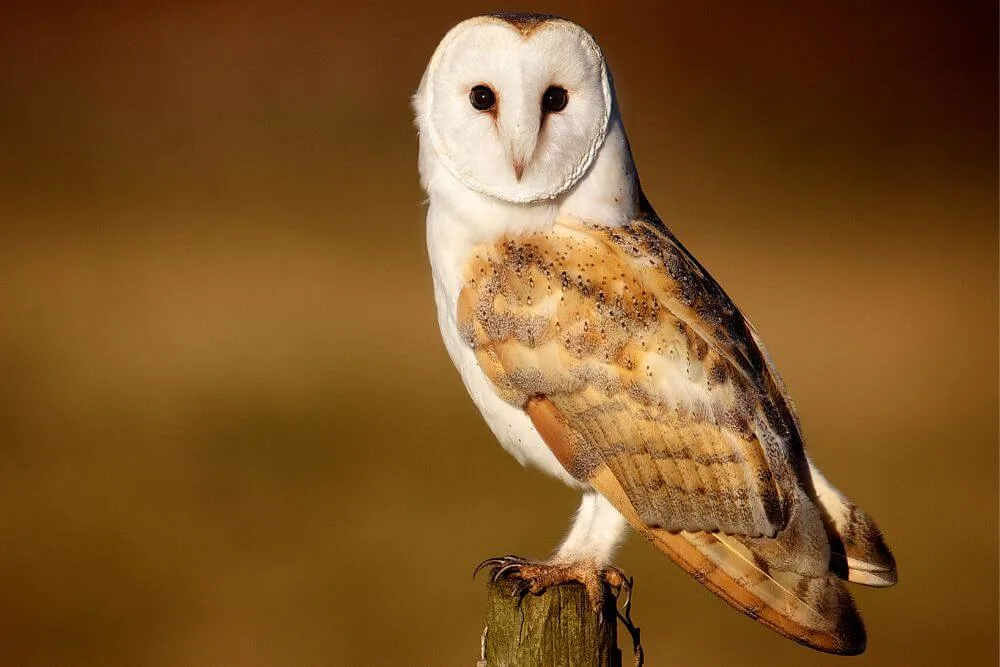
Three types of owl in Ireland are often seen. These species are the Barn Owl, Long-Eared Owl, Short-Eared Owl (winter visitor). In addition, the Snowy Owl is a rare winter visitor that is occasionally seen on the west coast.
On even more rare occasions, Ireland will also receive some migratory owls like the Little Owl or the Scops Owl. These visitors tend not to stay long and are usually just accidentally passing through.
Barn Owl
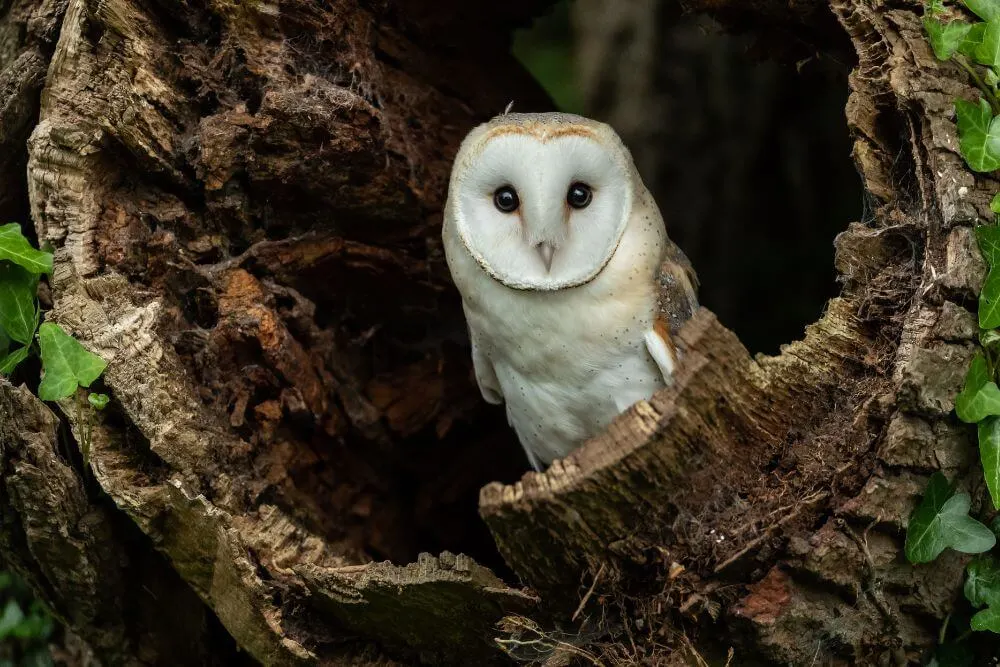
Irish Name: Scréachog reilige
Latin Name: Tyto alba
Conservation Status: Red
Barn Owl Ireland
The Barn Owl is one of the most well known birds and is easily recognisable by its heart shaped face, black eyes and honeycomb brown patterned feathers on its wings and back and mostly white front (the coloring can vary depending on the location but the birds found in Ireland are pale colored).
Due to its specially adapted feathers, this very beautiful bird has the ability to fly in almost complete silence when hunting. They are usually seen at night, but are occasionally seen during dusk.
Barn Owl Sounds
Barn Owls are known for making a wide range of sounds, including screeches, hisses and snores. One of the Irish names for the Barn Owl is “Scréachóg reilige”, which can be translated as the “screecher of the cemetery”. Their somewhat infamous scream is also thought to be the origin of the famous legend of the Banshee, the wailing woman who brings the omen of death.
Barn Owl Diet
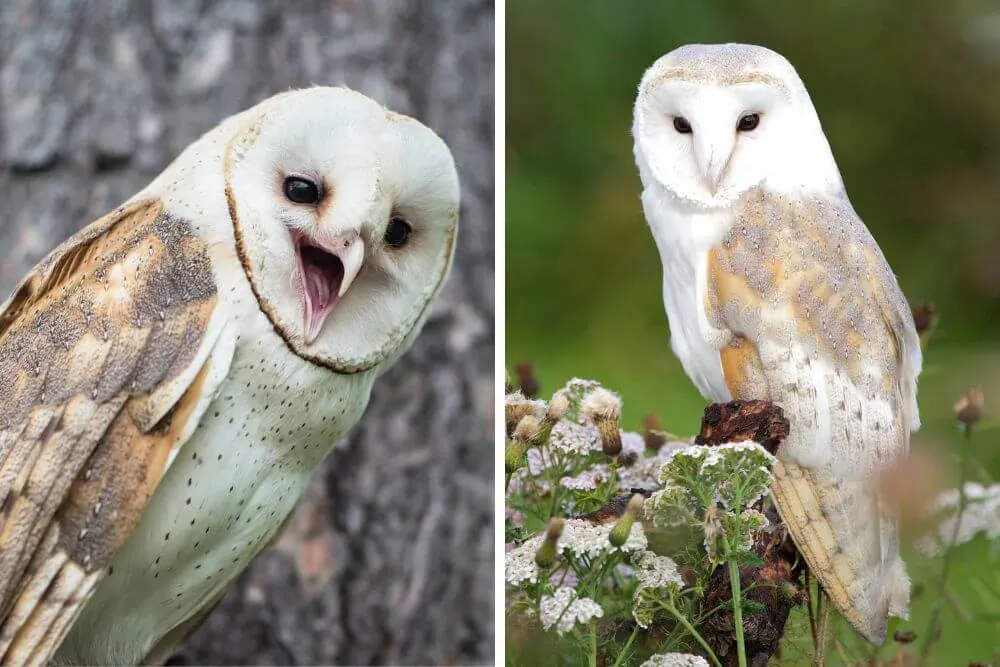
The diet of the Barn Owl consists largely of small mammals such as the Brown Rat, Wood Mouse, House Mouse, and the Pygmy Shrew. The introduced species of Bank Vole and the Greater-White-toothed Shrew are also hunted by Barn Owl. Occasionally, small birds, frogs or even bats are also hunted by these birds of prey.
Barn Owl Habitats
Barn Owls are found in different habitats but generally hunt for their food in unmanaged grassland areas that are not used for intensive agriculture. Grass banks and verges as well as the margins of woodland areas are also prime hunting spots for Barn Owls.
Barn Owl Nest Boxes
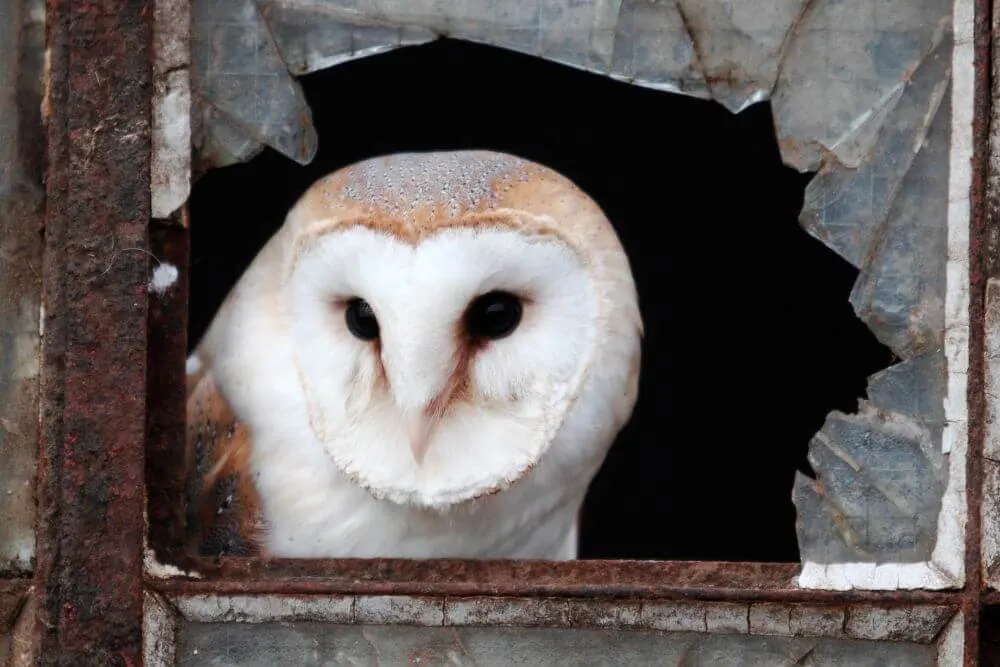
These owls often nest in old buildings, such as barns, abandoned cottages, ruined churches or castles. They also will use cavities in trees, cliff faces or quarries if they are suitable. Barn Owl nest boxes are a useful way to help support this species and can be used both indoors and outdoors. (See the BirdWatch Ireland Barn Owl Nest Boxes for more information).
For a long time, there was very serious conservation concern relating to Barn Owl populations in Ireland. In the last few years, there have been some positive progress relating to their numbers. For detailed information about Barn Owls in Ireland, you can listen to the BirdWatch Ireland In Your Nature Podcast episode No. 22, Barn Owl Conservation.
Long Eared Owl
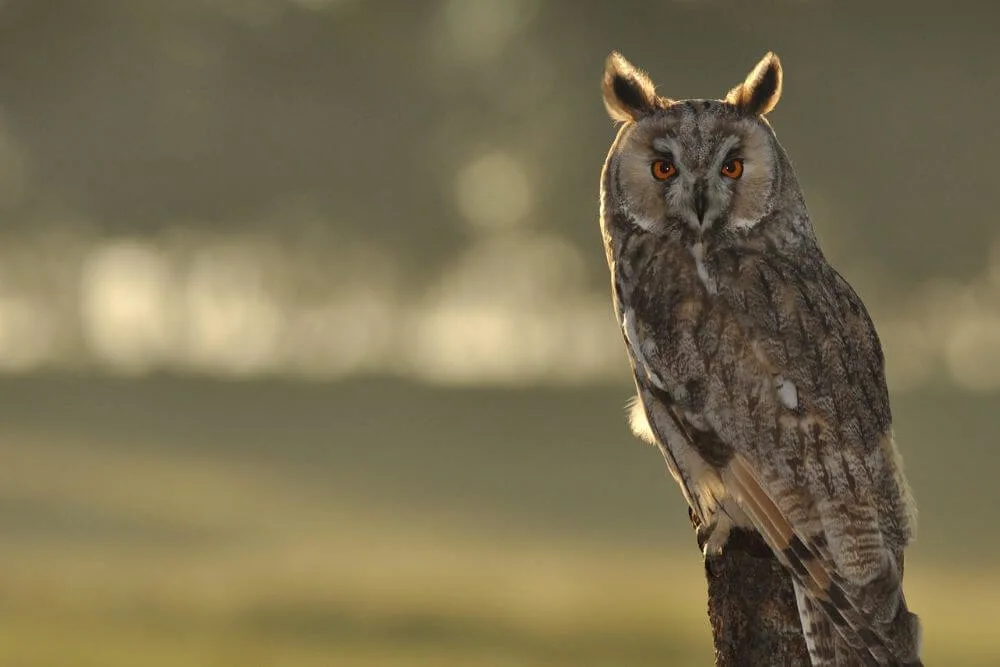
Irish Name: Ceann cait
Latin Name: Asio otus
Conservation Status: Green
Long-Eared Owl Ireland
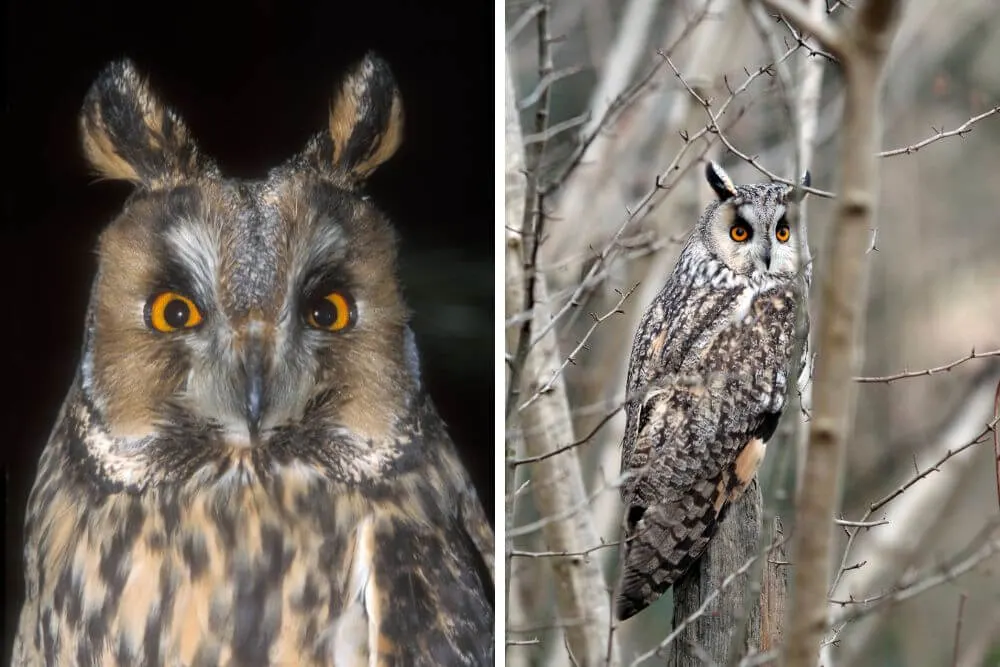
Long-Eared Owls are the owls most likely to be seen in Ireland as the species has a widespread distribution. This species of owl gets its name from the two tufts on the top of its head, these tufts are actually feathers and not ears as their name may suggest.
Long-Eared Owl Identification
These birds are well camouflaged to blend in with their surroundings. Their eyes are a bright red-orange color and they have dark streaking on their faces and bodies.
Unlike some of the other owls, this bird is a truly nocturnal owl species. Long-Eared Owls only fly at night and only very seldom seen when it is still bright.
Long-Eared Owl Habitat
Long-Eared Owls are most often found in woodland areas where they take over the old nests of squirrels (dreys) or crows. They are resident in Ireland all year round. During winter, several birds are sometimes found sharing a single communal roost.
Long-Eared Owl Sounds
The call of the Long-Eared Owl sounds like a deep “OO-OO”. (For more Irish owl sounds, check out the bird sounds resource website).
Short Eared Owl
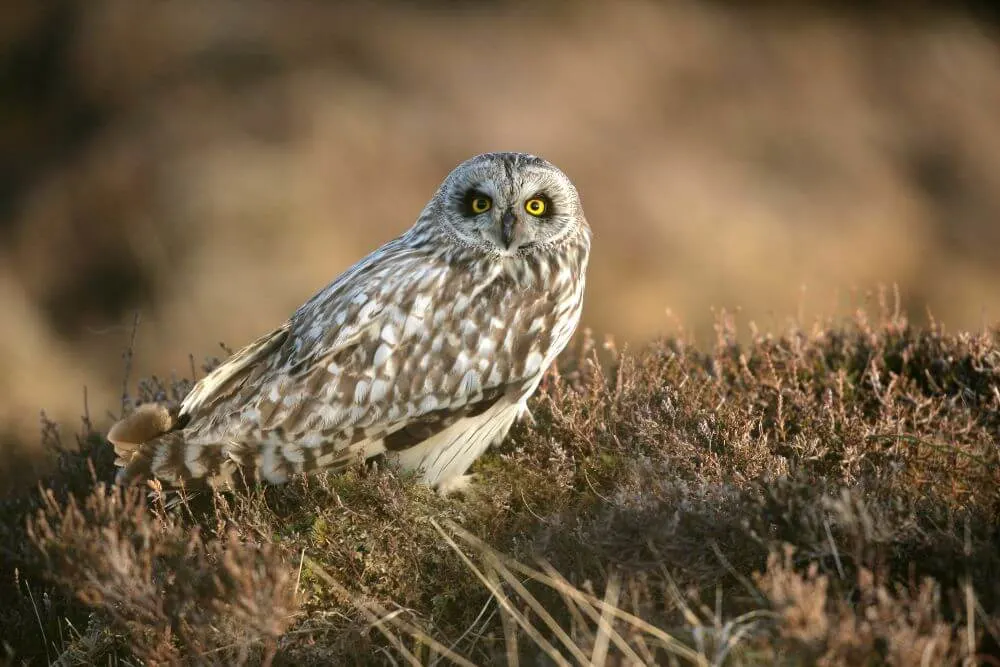
Irish Name: Ulchabhán réisc
Latin Name: Asio flammeus
Conservation Status: Amber
Short-Eared Owl Ireland
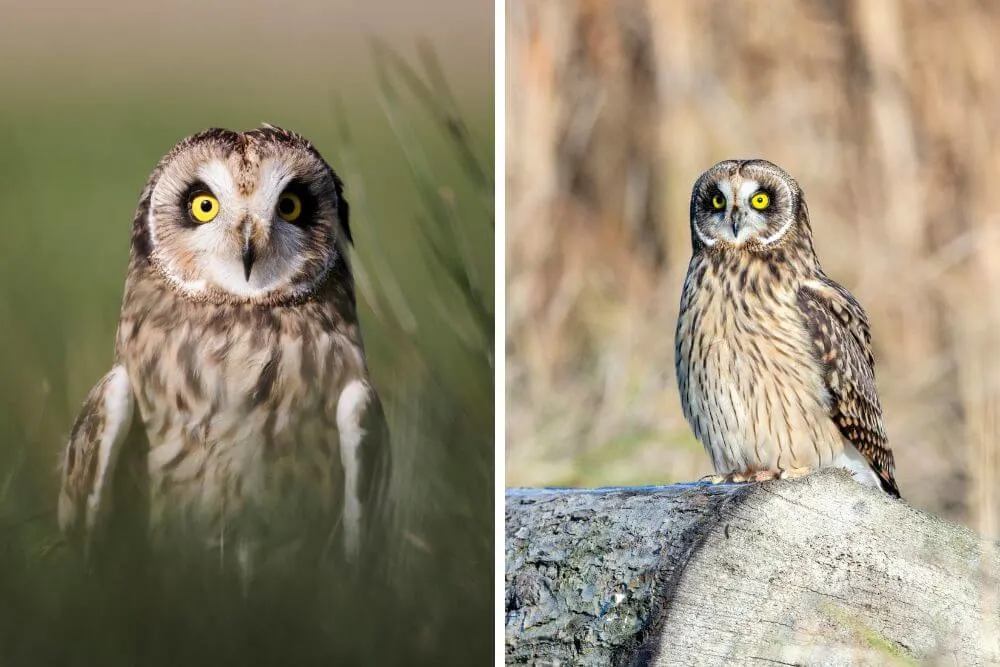
Unlike the Barn Owl and the Long-Eared Owl, the Short-Eared Owl is a temporary visitor to Ireland from more northerly regions, such as Iceland and Greenland. (However, the Short Eared Owl is resident in some parts of Britain throughout the year.) They arrive in Ireland from about September and stay during the winter months. When the winters are very harsh further north, more of these birds are found in Ireland.
Short-Eared Owl Identification
Short-Eared Owls are similar in size and markings to Long-Eared Owls, so it can be difficult to tell them apart. One of the differences is that the Short-Eared Owls have yellow eyes that are framed with black markings on the face. The so-called “ears” are small feathers on the top of its head, but are usually very difficult to see.
Short-Eared Owl Habitat
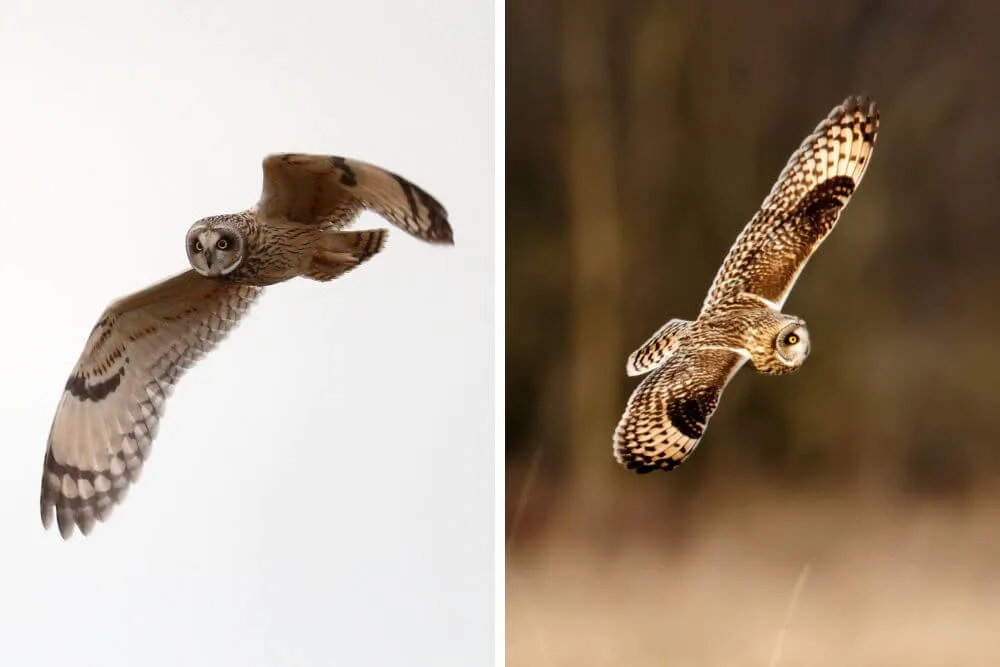
The Short Eared Owl is typically very active during the day and is found in a variety of different habitats in Ireland. They include bogs, rough grassland and open marshland, but primarily coastal dune areas.
This species tends to prefer voles as the main source of food in its diet, but is also found to eat other small mammals, frogs and birds.
Snowy Owl
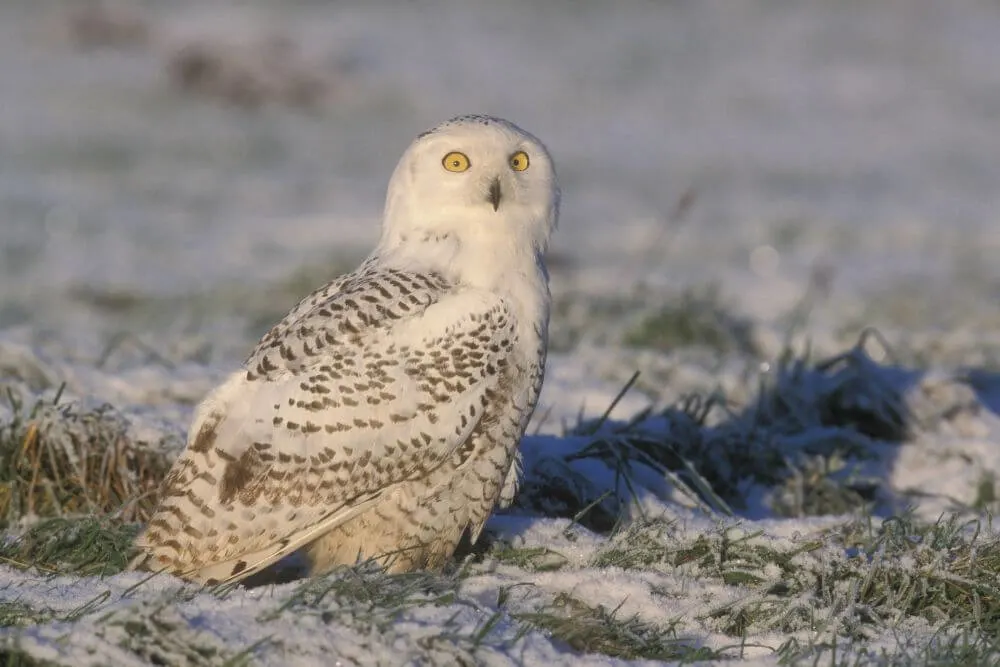
Irish Name: Ulchabhán sneachtúil
Latin Name: Bubo scandiaca
Conservation Status: Green
Snowy Owl Ireland
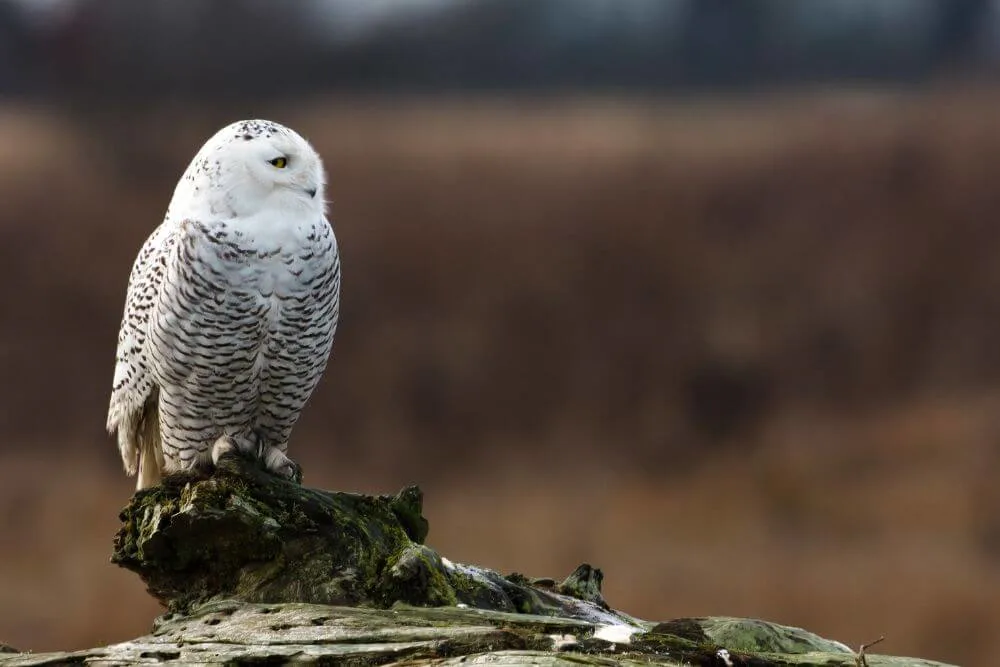
The Snowy Owl is a winter visitor to Irish shores. In the past, roughly up the mid 20th century, Snowy Owls were more frequently seen in Ireland, but during the latter part of the century, they were mostly absent. While they are still seldomly seen, there have been some rare winter sightings on the west coast in Galway, Mayo and Clare in recent years.
Snowy Owls are more typically found in northern latitudes of Europe, Asia and North America, where they breed during the summer months. During the winters, they sometimes migrate to milder more southerly locations, especially when their main food source, including lemmings, are in short supply
The Snowy Owl is one of the largest owl species in the world and is a very impressive sight to see. Plumage on these birds are mostly with some black barring patterns on their bodies and wings. Younger birds tend to have more black barring and become more white in appearance as they molt.
On average, these Snowy Owls can live to be roughly 9 or 10 years old in the wild.
Did you know? Hedwig, the owl that belongs to Harry Potter is also a Snowy Owl. The presence of this bird in the Harry Potter books and films definitely raised the profile of this species. It is important to note that these beautiful, amazing birds are best seen in the wild and are not suitable as pets.
Threats to Owls in Ireland
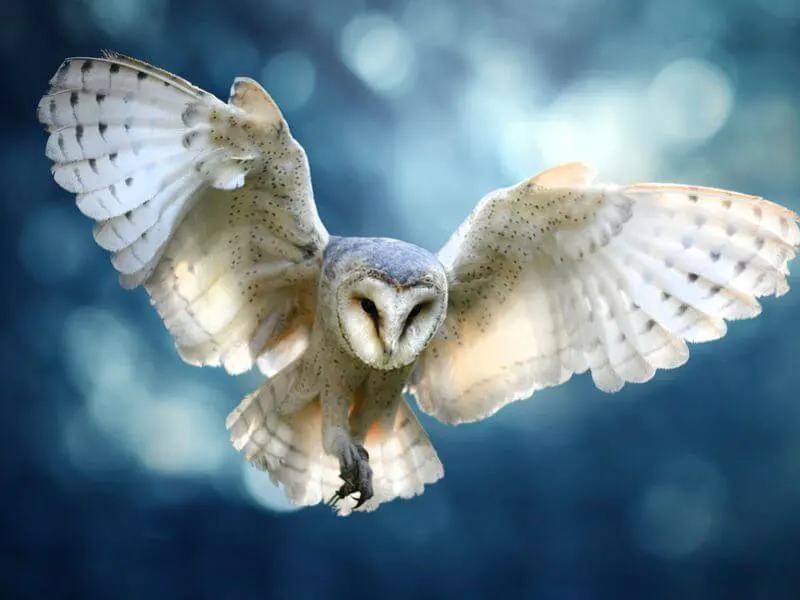
Changes in land use, the availability of suitable nesting sites, climate change, secondary poisonings and road collisions are some of the main threats facing Ireland’s owls.
In the past, Barn Owls were a welcomed addition to a farm or agricultural building (hence the name) as they helped to keep the pests under control, before the introduction and widespread use of poison (rodenticide).
As owls consume a large number of small mammals every day, this leaves them particularly vulnerable to the effects of secondary poisoning. The accumulation of this poison is likely to impact their health and their ability to hunt, and ultimately probably shortens their lifespan.
The Barn Owl Project is trying to address and tackle this problem in Ireland. To learn more about the great rescue and conservation work that this charity does for Barn Owls and other birds of prey, please visit their website.
Changes in land use have led to habitat loss for the owls and this has reduced the number of suitable habitats and nesting sites. In an effort to reverse this trend for nesting sites, Barn Owl boxes are being established at both indoor and outdoor locations around the country.
However, poorly designed boxes are likely to hinder the success of the owls, so please check out the recommended design (Birdwatch Ireland nest box design) and suggestions for suitable locations to help with the breeding success of the Barn Owls.
As owls are sometimes found to hunt on grass verges near roadsides, they are occasionally involved in collisions with vehicles. Any collisions should be reported to the Barn Owl Project. If you find an injured owl or bird of prey in Ireland, please contact the Barn Owl Project for assistance.
How can you help support Irish owls?
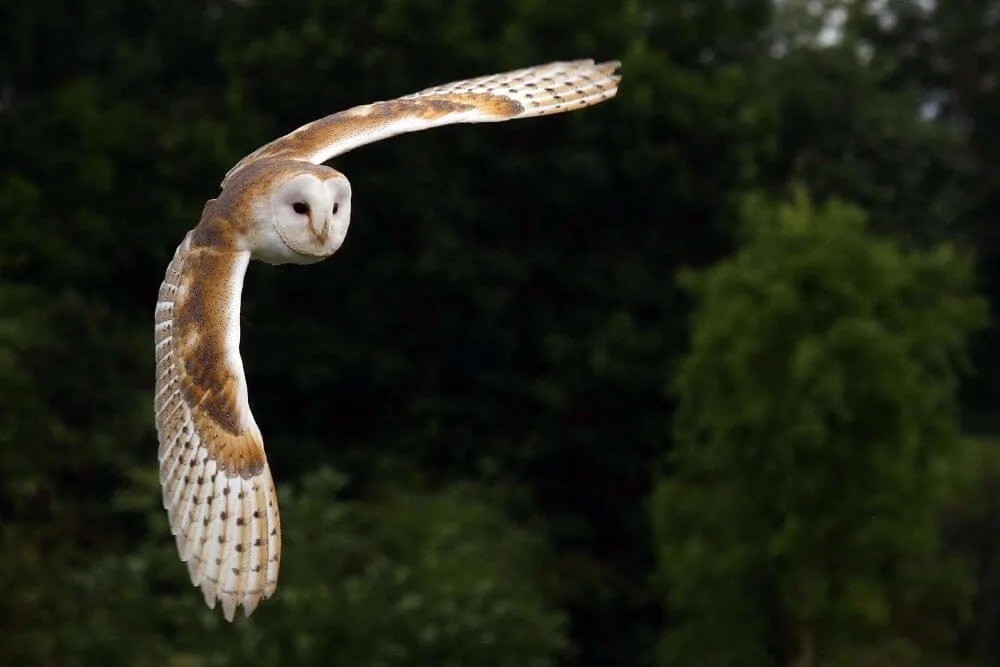
One of the best ways to help owls and other birds in Ireland is to support one of the organizations in Ireland that is working hard to protect and improve the habitats of these animals. You can do so by volunteering your time, or supporting them financially whenever possible.
The Barn Owl Project is a very active organization which enlisted the help of volunteers to promote the conservation of Barn Owls and rehabilitation of injured birds. In addition to recording sightings and recording dead birds, they also build owl nest box sites to help support breeding pairs.
Find out more about the Barn Owl Project here.
The charity BirdWatch Ireland is a great resource for all things bird related from watching garden birds to where you can see the rarest visitors in Ireland. This charity focuses on conservation of birds and their habitats, which is a particularly important and challenging task in Ireland. As well as conducting hours of research on bird monitoring surveys, they also contribute to education, awareness and biodiversity related policy issues, as well as maintain nature reserves across the country.
Furthermore, Bird Watch Ireland also have a very interesting podcast In Your Nature, made in partnership with the Heritage Offices of Laois and Offaly County Councils, which explores more about Irish Wildlife.
Find out more about membership of BirdWatch Ireland, public events news, as well as their gift shop via their website.
Interested in learning more about birds in Ireland? Check out the Birds of Prey or read more about the Kestrel in our other posts.

(Irish Nature Expert and Celtic Enthusiast from Ireland)
Emer Walker, founder of LetsGoIreland.com, is a Cork native with profound expertise in Irish nature and ecology. Holding a PhD in Restoration Ecology and backed by extensive research in ecological sciences, she’s delved deep into Ireland’s natural wonders, from its rugged landscapes to its serene beaches. Emer’s passion also encompasses Celtic art and traditions. As a true authority on Ireland’s natural and cultural heritage, she invites readers through LetsGoIreland.com to immerse themselves in the authentic Irish experience.
